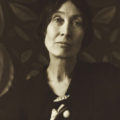The Wind on Mors Island

Last year, at age 90, Knud Sørensen put out his fourteenth poetry collection to go along with his 35 other works of biography, novels, short stories, essays, and memoir.
After growing up in Northern Jutland, where his father was a railroad manager, the Danish author got his education as a land surveyor in Copenhagen. When the surveyor from the rural island of Mors retired, Knud moved to this inland island located in the Limfjord, a body of water that crosses east-west, bisecting Jutland. During his career as a rural land surveyor, Sørensen witnessed radical changes in agriculture during the latter half of the twentieth century, as small farms went bankrupt, and agribusiness blossomed in Denmark, as it did across the globe.
Simultaneously, in his long writing career, Sørensen documented losses incurred and victories gained as humanity’s stewardship of the land shifted. Unsentimental and poignantly understated, his books vividly evoke the essential rituals of stewardship of the earth; how seemingly small decisions, repeated over time, precipitate immeasurable and unrelenting changes. Sørensen has won over 20 literary awards, including a lifelong grant from the Danish Arts Council. In November 2014 he received the Grand Prize of the Danish Academy.
Sørensen’s work had never made it out of Denmark until 2016, when Michael Goldman translated a selection of Sørensen’s rural poetry: Farming Dreams (Spuyten Duyvil Press). Then in spring of 2018, Spuyten Duyvil published The Way It Seems, Goldman’s translation of Sørensen’s selected short stories. Dorthe Nors, Danish author of Karate Chop, writes, “Knud Sørensen’s formidable literary output bears a vulnerability, an embracing, gentle warmth, and a penetrating apprehension of emotional depth in commonplace events. May his work take flight and find readers around the globe.”
A tremendously flat country with maritime weather, Denmark is very windy. No wonder they are a leader in modern windmill turbines and produce well over 40% of their electricity from windmills. Some of the windmills are corporate owned, but most are community owned through investment cooperatives.
—Michael Goldman, translator
It used to be, where we live, that we did not like the wind.
It bothered us. A lot.
It came storming in, blowing the apples off the tree before they were ripe, curling around the house with a drawn out, unsettling voice, bringing down to us the cold from the Faroe Islands and Iceland, diluting the summer days that should have been warm. The wind ushered up to us every rainstorm that should have stayed down over the English Channel, made the fjord’s nice blue surface uneven and murky, and, in some mysterious way, that no scientist or meteorologist could explain, it was able to place at least fifty percent of all the snow that fell on Mors on our sidewalk, so we often had to go out with shovels and scrapers several times a day so as not to violate the local ordinance too many times.
No, we did not like the wind. And it made us shiver when someone performed “The wind blows fresh over the Limfjord’s waters,” and we shivered, not only for literary reasons.
But we don’t feel that way any more.
Now we’re shareholders in Southwest Mors Windmill Farm.
Now it’s the calm days that get to us. Then we long to see the trees shaken by the Jutland wind, and we listen to try to detect the very first confidential whisper of a tiny breeze. We study weather maps and call up Karup weather station every other hour, when the wind apparently has been beaten back by a stationary high pressure zone over southern Scandinavia.
Those are our minus days.
But on the other hand, gales are wonderful. We jump on our bicycles and ride into a headwind—or a headgale—to really feel in our bodies the power it contains. And when we wake at night with the branches slashing against the window pane and the wind howling around the corners, we look deep into each other’s eyes and feel inside ourselves an echo of all that energy racing around out there.
Even the coolish summer days gladden us—if the wind is blowing—and a winter snowstorm can be pure delight, even though we naturally still could do without the snow itself.
And it’s not just we who have changed. The landscape has changed, too. If, for example, you stand on Salgjerhøj, the highest point on Mors, you will view a land nearly new.
Nearly a hundred years ago, Mors was visited by the great Norwegian poet, Bjørnsterne Bjørnson. He rode up to the top of Salgjerhøj, and there the great poet looked out over the fertile island. What struck him particularly was how many churches there were. He started to count them. There were over thirty.
He remarked, “Either the Mors-ites are exceedingly devout or they are exceedingly lazy.”
Today it is not the churches that you notice most, but the windmills. Every month there come more of them—the whole landscape is in motion—and what you see now has nothing to do with un-Christian laziness, but with divine energy. Kilowatt-hour after kilowatt-hour is harvested from the wind, illuminating and warming an increasingly greater percentage of the population.
And when you stand there amid all this movement—that, of course, is also a social movement—it can give you visions.
It’s not just windmills you stand there looking at. It’s also propellers. There are propellers installed on Mors, and one day there will be so many, that the whole island will rise and fly into a greener future.
Then we’ll just have to hang onto the grassroots, so we don’t fall off and get left behind.
Michael Favala Goldman (b.1966), besides being a widely-published translator of Danish literature, is a poet, jazz clarinetist, gardener, father and husband. Over 100 of Goldman’s translations have appeared in dozens of literary journals such as The Harvard Review and The Columbia Journal. He teaches workshops and gives readings at universities and literary events. His recent books include works by Knud Sørensen, Cecil Bødker, Knud Sønderby, Marianne Koluda Hansen and Benny Andersen.
About Knud Sørensen
Danish author, Knud Sørensen, born in 1928, was a certified land surveyor for 28 years, during which he became intimate with the Danish agricultural landscape. His work is best known for its portrayal of life in rural Denmark and the dissolution of small farming communities. A book reviewer for 14 years, he has also written 48 books and won over 20 literary awards. including a lifelong grant from the Danish Arts Council. In November 2014 he received the highest honor for a Danish author - the Grand Prize of the Danish Academy. His books translated into English include Farming Dreams (poetry) and The Way It Seems (short stories).





